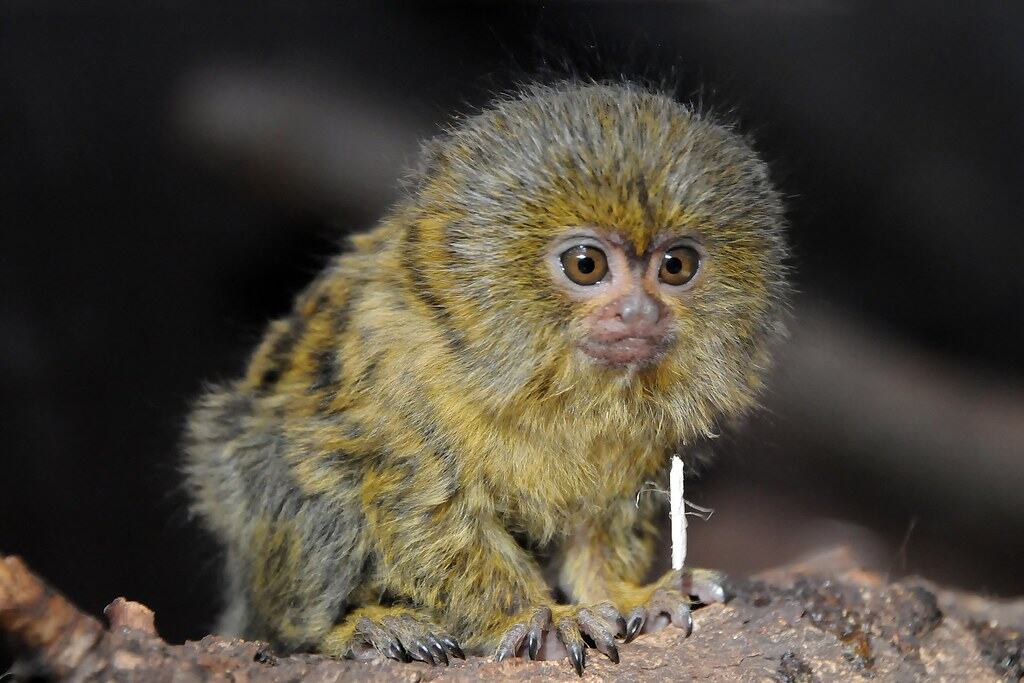In the lush canopies of the Amazon rainforest lives a remarkable primate that could fit in the palm of your hand. The pygmy marmoset (Cebuella pygmaea) holds the distinguished title of being the world’s smallest monkey and one of the tiniest primates on Earth. With its diminutive size, distinctive features, and fascinating behaviors, this miniature marvel has captivated scientists and animal enthusiasts alike. Despite its small stature, the pygmy marmoset plays a significant role in its ecosystem and exhibits complex social behaviors that rival those of much larger primates. This article explores the unique characteristics that make the pygmy marmoset not just the world’s smallest monkey but also one of nature’s most extraordinary creations.
Remarkable Size and Proportions

The pygmy marmoset’s claim to fame lies primarily in its extraordinarily small size. Adult pygmy marmosets typically weigh between 3.5 to 4.5 ounces (100-120 grams), comparable to the weight of a standard stick of butter. With a body length averaging just 4.6 to 6.2 inches (12-16 centimeters) – not including their tail – these tiny primates could easily fit in a teacup. Their tails, which are longer than their bodies at 6.8 to 9 inches (17-23 centimeters), help them balance as they move through the forest canopy.
To put their size into perspective, pygmy marmosets are smaller than many rodents and are dwarfed by most other primates. Even among the generally small marmoset family, pygmy marmosets stand out as exceptionally tiny. Their diminutive proportions represent an evolutionary adaptation that allows them to occupy a specialized ecological niche, accessing food sources and habitats unavailable to larger primates. Despite their small size, these marmosets maintain all the anatomical features typical of monkeys, just in miniature form.
Evolutionary History and Classification

Pygmy marmosets belong to the family Callitrichidae, which includes marmosets and tamarins. They are so distinctive that they’re placed in their own genus, Cebuella, separating them from other marmosets. Evolutionary biologists believe that their small size evolved as an adaptation to their specialized ecological niche. Recent genetic studies have identified two distinct species: the western pygmy marmoset (Cebuella pygmaea) and the eastern pygmy marmoset (Cebuella niveiventris), which were previously considered a single species.
The evolutionary history of pygmy marmosets involves a process called phyletic dwarfism, where animals evolve to become progressively smaller over time. This adaptation likely occurred in response to specific environmental pressures and competition for resources. Scientists estimate that pygmy marmosets diverged from other marmosets approximately 5-6 million years ago, allowing them ample time to evolve their specialized traits. Their classification continues to be refined as researchers learn more about these fascinating primates through advanced genetic analysis techniques.
Geographic Distribution and Habitat
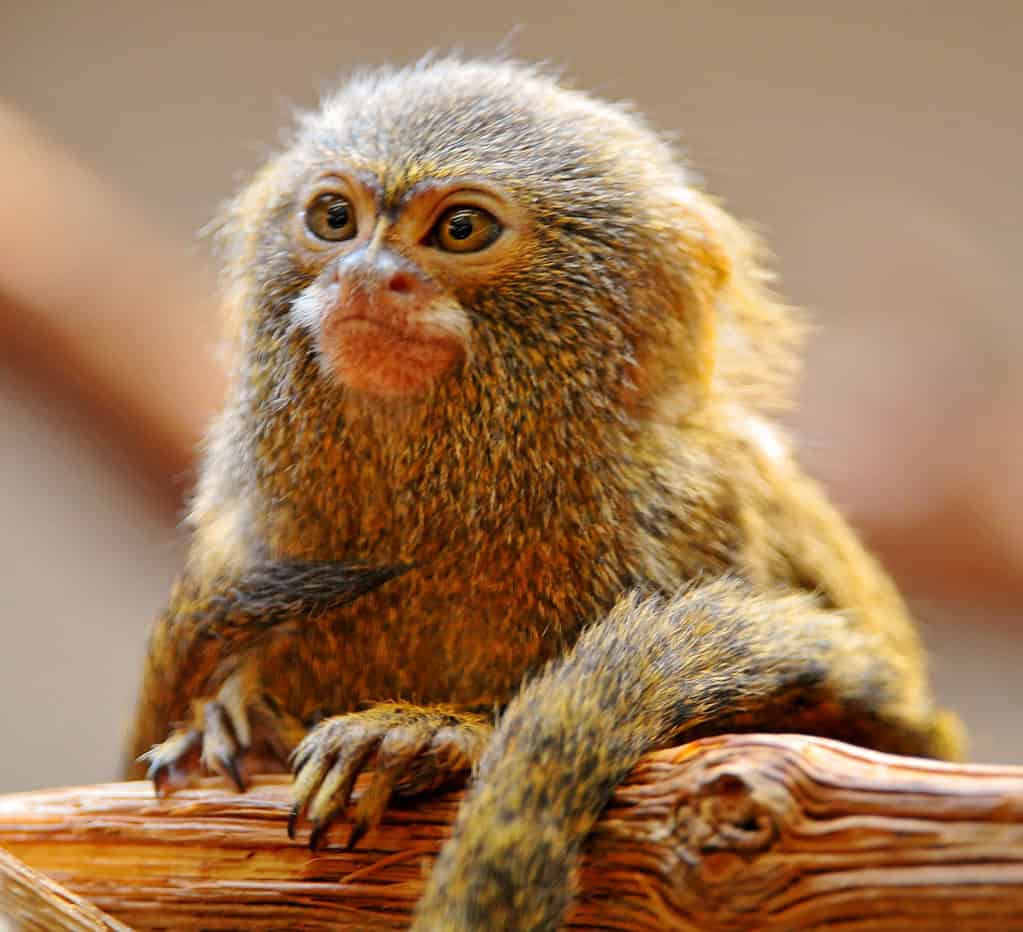
Pygmy marmosets are native to the western Amazon Basin, with populations found in Brazil, Colombia, Ecuador, Peru, and Bolivia. These miniature monkeys thrive in riverine and floodplain forests, particularly favoring areas with dense understory vegetation and abundant tree gum sources. They typically inhabit the lower levels of the forest, usually between 10 and 60 feet (3-18 meters) above ground, where they can easily access tree trunks for gum feeding while remaining relatively protected from aerial predators.
Their habitat preferences are closely tied to the availability of gum-producing trees, particularly those in the genera Inga, Parkia, and Spondias. These specialized habitat requirements make pygmy marmosets particularly vulnerable to habitat fragmentation and deforestation. Unlike some primate species that can adapt to disturbed habitats or agricultural landscapes, pygmy marmosets are forest specialists with limited ability to thrive in human-modified environments, making forest conservation crucial for their survival.
Distinctive Physical Features
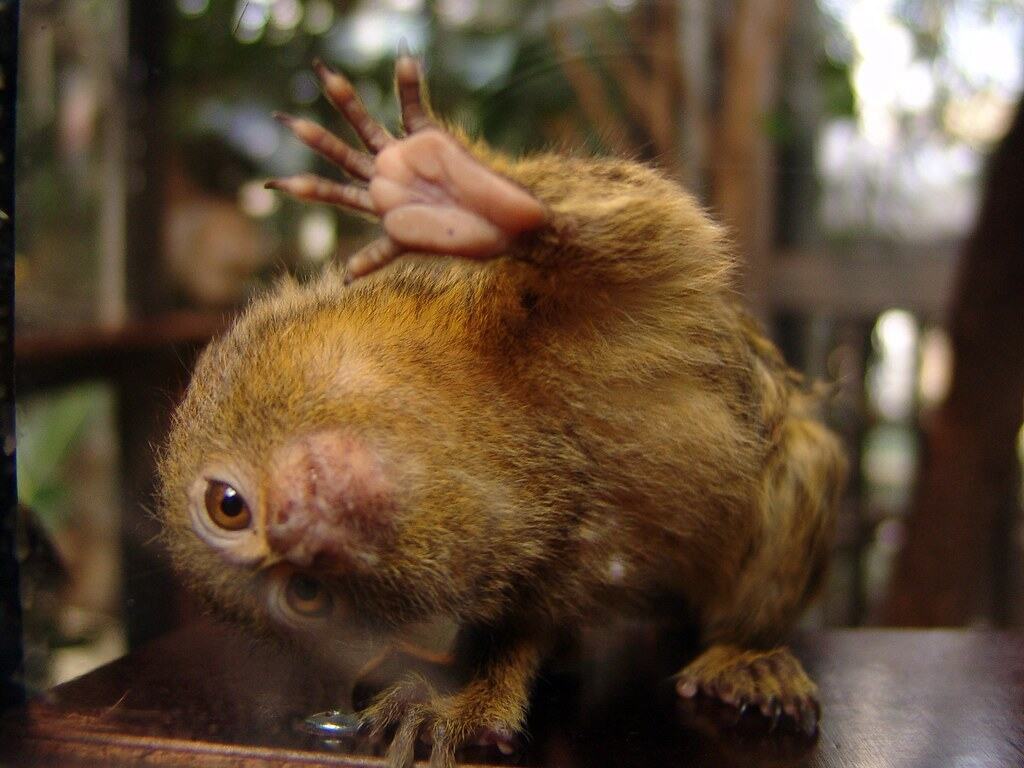
Beyond their minute size, pygmy marmosets possess several distinctive physical characteristics that set them apart from other primates. Their fur is a mottled brown, gray, and yellow, providing excellent camouflage against tree bark. They have distinctive tufts of white fur that frame their faces, giving them an expressive appearance. Their heads appear disproportionately large for their bodies, with prominent ears that enhance their hearing capabilities for detecting predators in the dense forest.
One of their most specialized adaptations is their dentition. Pygmy marmosets possess sharp incisor teeth that are perfectly adapted for gouging tree bark to stimulate the flow of gum and sap. Their fingernails are modified into sharp claws on all digits except the big toe, allowing them to cling to vertical tree trunks while feeding. Another remarkable feature is their ability to rotate their heads 180 degrees, giving them an owl-like capacity to scan their surroundings without moving their bodies and potentially alerting predators to their presence.
Specialized Diet and Feeding Habits
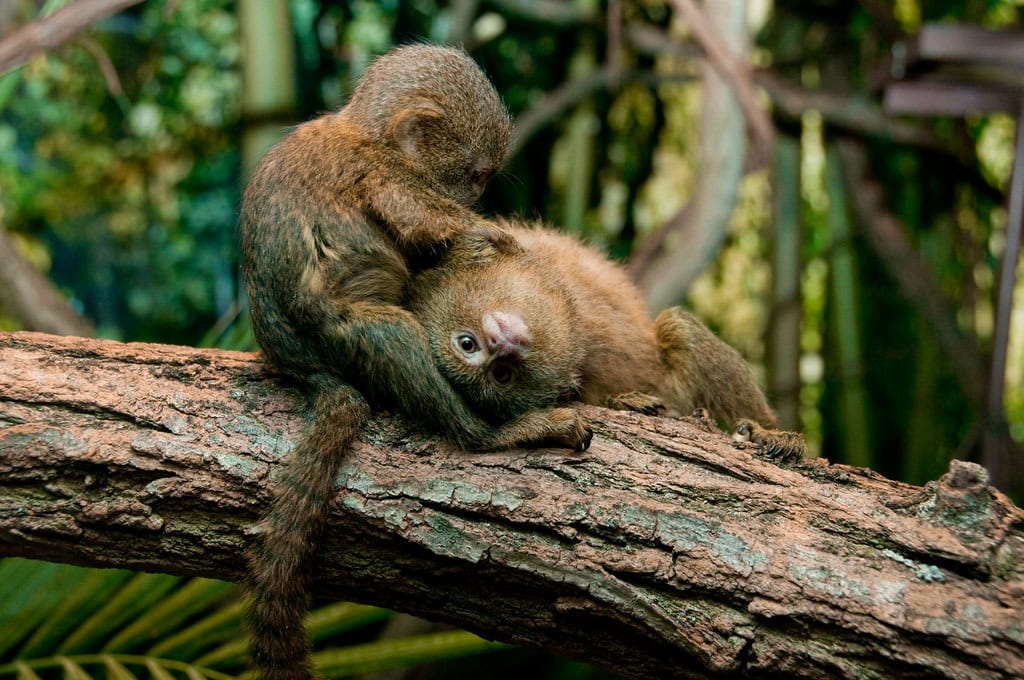
The pygmy marmoset’s diminutive size correlates with its highly specialized diet. These tiny primates are primarily exudativores, meaning they feed on tree exudates like gum and sap. Using their specialized dentition, they gouge small holes in tree bark to stimulate the flow of these nutritious substances, which can comprise up to 70% of their diet. This specialized feeding strategy allows them to access a food source that few other mammals can efficiently exploit, reducing competition and providing a reliable year-round food source.
To supplement their gum-based diet, pygmy marmosets also consume insects, spiders, small fruits, nectar, and occasionally small lizards or frogs. Their miniature size allows them to move along the thinnest branches where insects might hide. Each pygmy marmoset maintains a territory containing multiple “gum trees” that they visit regularly, creating a network of tiny holes that they revisit as the gum regenerates. These feeding sites are zealously defended against intruders, highlighting the importance of this resource to their survival.
Complex Social Structure
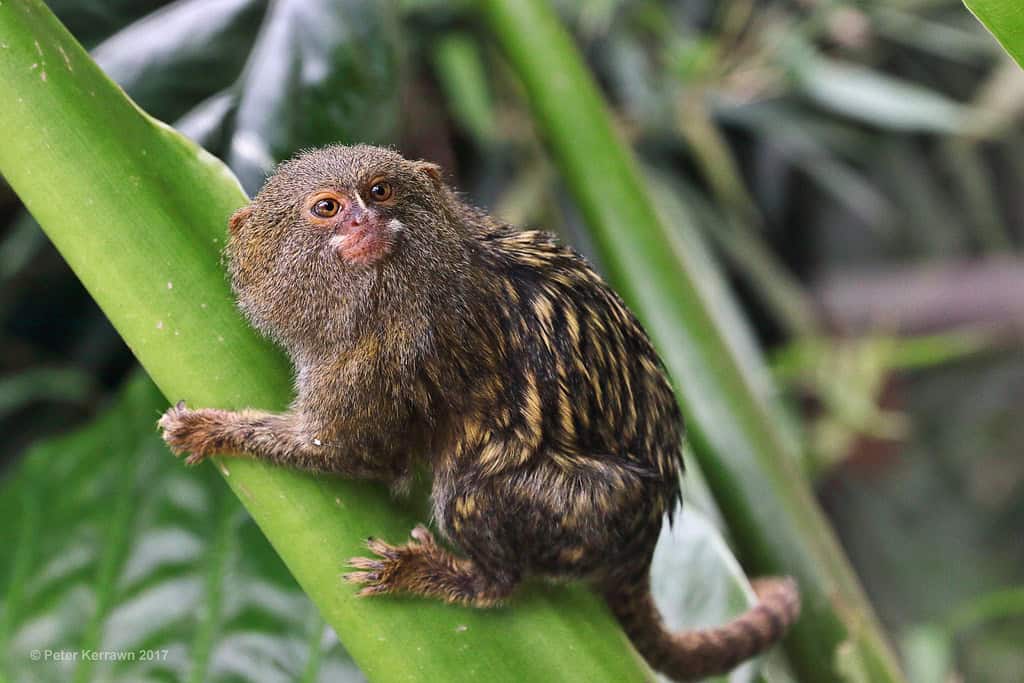
Despite their tiny size, pygmy marmosets maintain intricate social structures. They typically live in family groups of 2-9 individuals, consisting of a breeding pair and their offspring from multiple births. Within these groups exists a cooperative breeding system where all members help care for infants. This alloparenting behavior is crucial for the survival of newborns, as pygmy marmosets often give birth to twins, which would be too heavy for a single mother to carry continuously (representing up to 25% of her body weight).
Communication within pygmy marmoset groups is remarkably sophisticated, utilizing a complex system of vocalizations, facial expressions, and body postures. They produce at least 15 distinct calls, including high-pitched trills that can reach frequencies of up to 65 kHz, well above human hearing range. These vocalizations serve various purposes from territory defense to group cohesion and predator alerts. The complexity of their social interactions contradicts what might be expected from such a small-brained primate, challenging researchers’ understanding of the relationship between brain size and social complexity.
Reproductive Biology and Growth
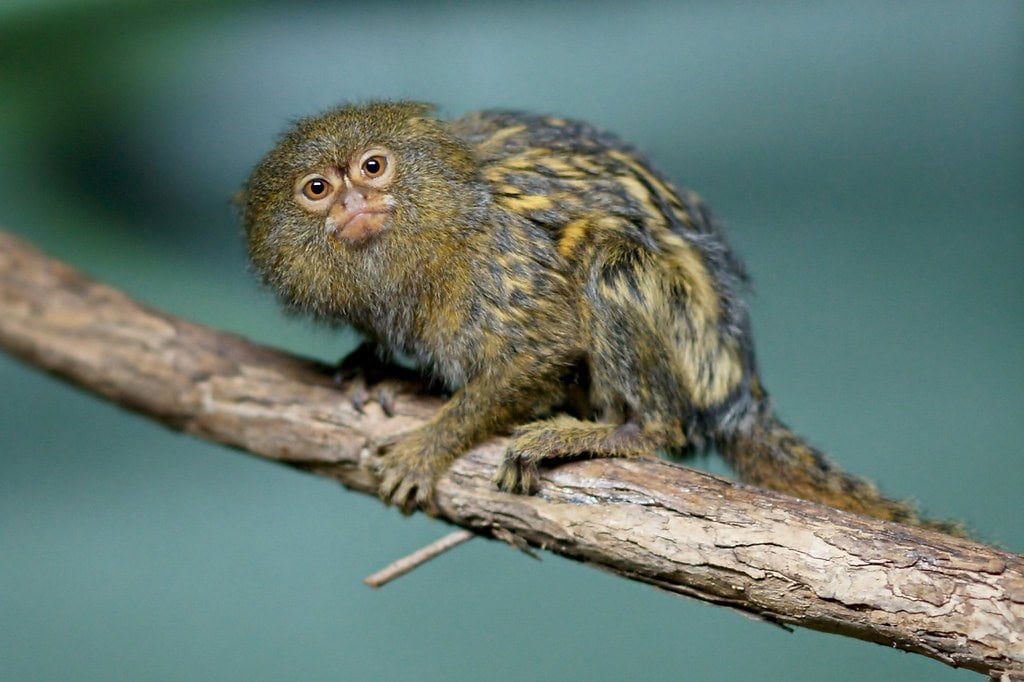
The reproductive biology of pygmy marmosets is as fascinating as their other characteristics. Females typically give birth to twins twice a year, though triplets and even quadruplets occasionally occur. Considering that newborns weigh around 0.5 ounces (15 grams) each—about 15-20% of the mother’s body weight—multiple births represent an extraordinary physiological feat. The gestation period lasts approximately 4.5 months, relatively long for such a small mammal, resulting in more developed infants at birth.
Infant care is a family affair, with fathers and older siblings playing crucial roles in carrying and protecting the newborns. The infants cling to their carriers’ backs for the first few weeks of life, transferring to different family members throughout the day. Young pygmy marmosets grow rapidly, reaching adult size within 5-6 months and sexual maturity by 1.5 years. Despite their quick development, they often remain with their family group until they have the opportunity to establish their own breeding position, either by inheriting their natal territory or dispersing to create a new group.
Adaptations for Survival
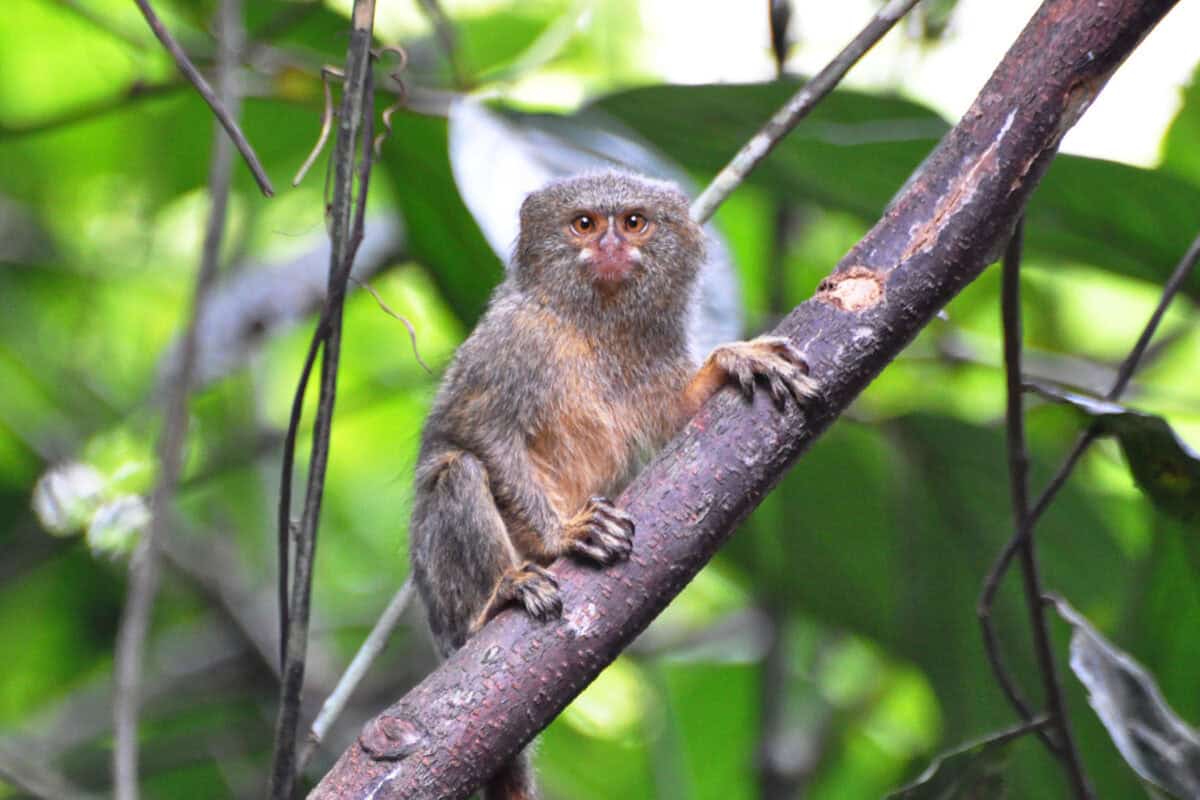
The pygmy marmoset’s small size might seem disadvantageous in a predator-rich environment, but it comes with several survival benefits. Their diminutive stature allows them to hide effectively among foliage and in small crevices that larger primates cannot access. Their mottled fur provides excellent camouflage against tree bark, making them nearly invisible when motionless. Additionally, their ability to move quickly and silently through the forest understory helps them avoid detection by predators such as snakes, birds of prey, and larger mammals.
Beyond physical adaptations, pygmy marmosets have developed behavioral strategies that enhance their survival. They are most active during twilight hours (crepuscular), reducing exposure to diurnal predators while avoiding nocturnal hunters. When threatened, they freeze in place, relying on their camouflage, or rapidly flee through dense vegetation where larger predators cannot follow. Their complex vocalizations include specific alarm calls that alert group members to different types of threats, allowing for coordinated escape responses that maximize survival chances for the entire family group.
Ecological Importance
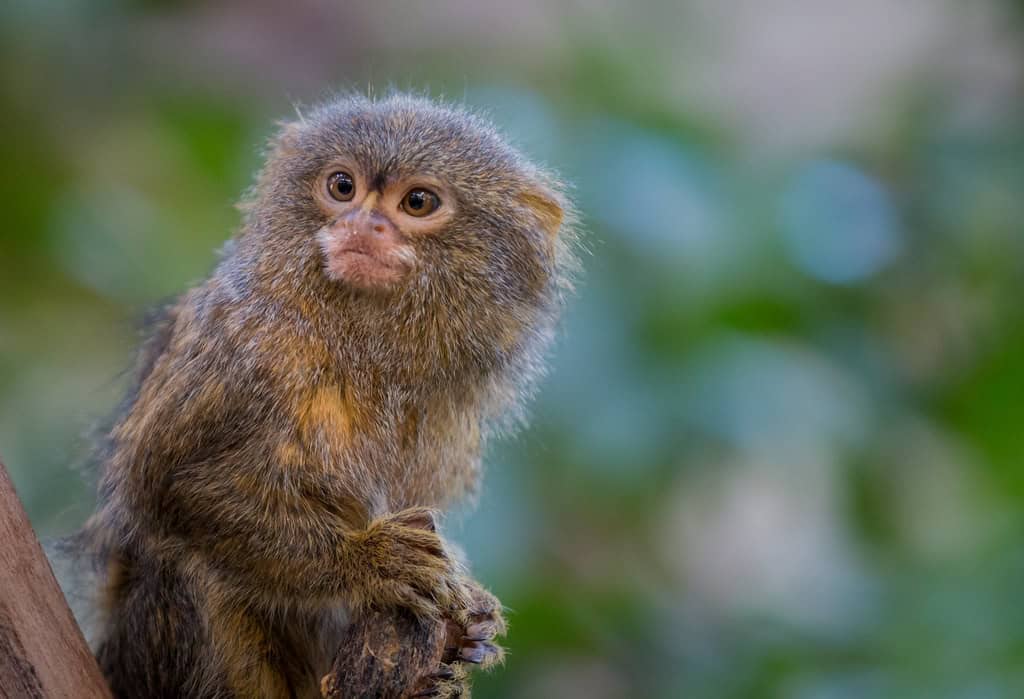
Despite their small size, pygmy marmosets play significant ecological roles in their forest habitats. As exudate feeders, they create thousands of small holes in trees throughout their lifetime, potentially benefiting other organisms that can access the gum through these openings. Their feeding habits may also influence tree health and sap production, potentially affecting forest dynamics on a broader scale. Additionally, their consumption of insects helps control invertebrate populations within their territory.
Pygmy marmosets also serve as prey for numerous predators, transferring energy up the food chain. Their specialized niche demonstrates the remarkable diversity of ecological adaptations within tropical ecosystems. As inhabitants of riparian forests, they’re particularly important in these ecologically sensitive zones that serve as transitions between aquatic and terrestrial environments. The presence of healthy pygmy marmoset populations can indicate well-functioning forest ecosystems, making them potential bioindicators for conservation assessment in Amazonian habitats.
Conservation Status and Threats
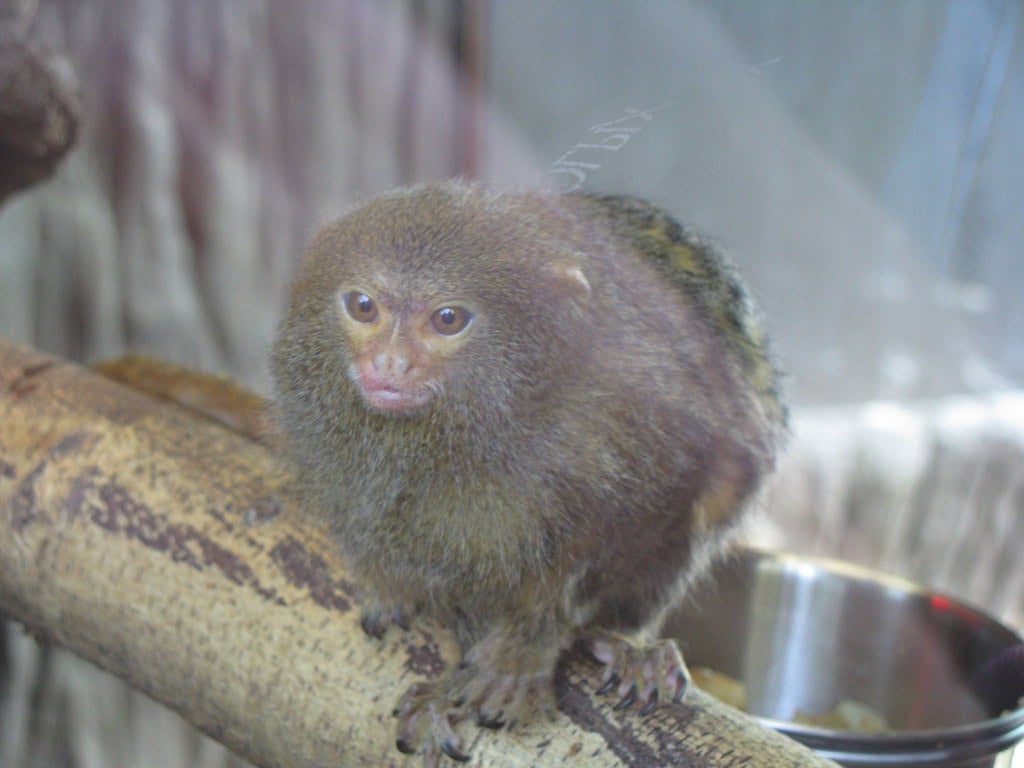
The International Union for Conservation of Nature (IUCN) currently lists pygmy marmosets as a species of “Least Concern,” but this status masks significant regional threats. Their specialized habitat requirements make them particularly vulnerable to deforestation and habitat fragmentation throughout the Amazon Basin. As riverine forests are often the first cleared for agriculture, logging, and human settlement, pygmy marmoset populations face increasing pressure from habitat loss. Climate change poses an additional threat, potentially altering the seasonality and availability of their food resources.
The exotic pet trade represents another serious threat to pygmy marmoset populations. Their adorable appearance and tiny size make them desirable pets, despite being wholly unsuited to captivity. Illegal capture for the pet trade not only removes individuals from the wild but often disrupts entire family groups, as trappers frequently kill adult marmosets while capturing infants. Conservation efforts include habitat protection, anti-trafficking enforcement, and education programs to discourage the keeping of these specialized primates as pets. More research is needed to accurately assess population trends across their range.
Research Challenges and Scientific Significance

Studying the world’s smallest monkey presents unique challenges for researchers. Their tiny size, camouflage ability, and preference for dense forest habitats make them difficult to observe in the wild. Their high-frequency vocalizations often go undetected without specialized recording equipment. Despite these challenges, pygmy marmosets have contributed significantly to our understanding of primate evolution, social behavior, and ecological specialization. Their existence demonstrates how evolutionary forces can produce extreme adaptations to specialized ecological niches.
Scientists are particularly interested in pygmy marmosets for what they reveal about the relationship between body size, brain size, and behavioral complexity. Despite having the smallest brain of any monkey in absolute terms, pygmy marmosets display remarkably complex social behaviors and communication. This challenges assumptions about minimum brain size requirements for complex social structures and suggests that neural organization may be more important than absolute brain size. Ongoing research using non-invasive techniques continues to reveal new aspects of pygmy marmoset biology, making them valuable subjects for comparative primatology and evolutionary studies.
Captive Care Considerations
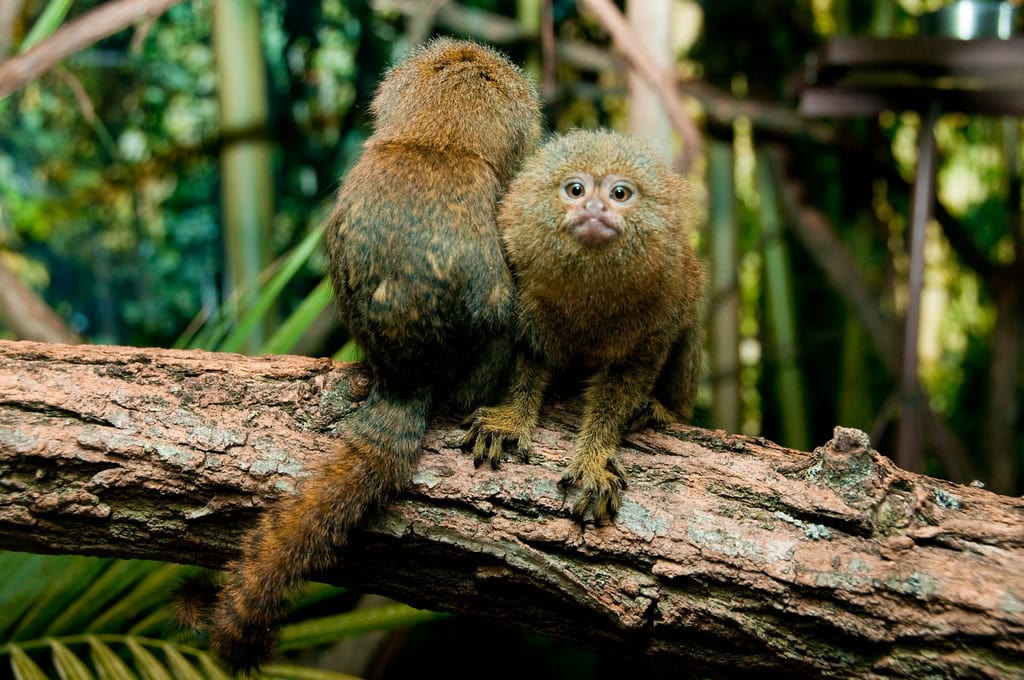
While pygmy marmosets should not be kept as pets, they are occasionally maintained in specialized zoological facilities for conservation, education, and research purposes. Providing appropriate care for these specialized primates is extraordinarily challenging. Their complex dietary needs require specialized gum-based foods to supplement insects and fruits. Housing must accommodate their natural behaviors, including vertical space for climbing, branches of varying thicknesses, and opportunities to engage in gouging behaviors. Social needs are equally important, as pygmy marmosets suffer significant psychological distress when housed alone.
Successful breeding programs in accredited facilities have contributed to our understanding of pygmy marmoset reproductive biology and behavior. These programs maintain studbooks to ensure genetic diversity within captive populations. However, the challenges of appropriate care underscore why these specialized primates are wholly unsuitable as pets. Educational exhibits featuring pygmy marmosets can play important roles in raising awareness about the diversity of primate adaptations and the importance of conserving Amazonian forests, but must prioritize the welfare of these sensitive animals above display considerations.
Remarkable Adaptations of Nature’s Miniature Monkey
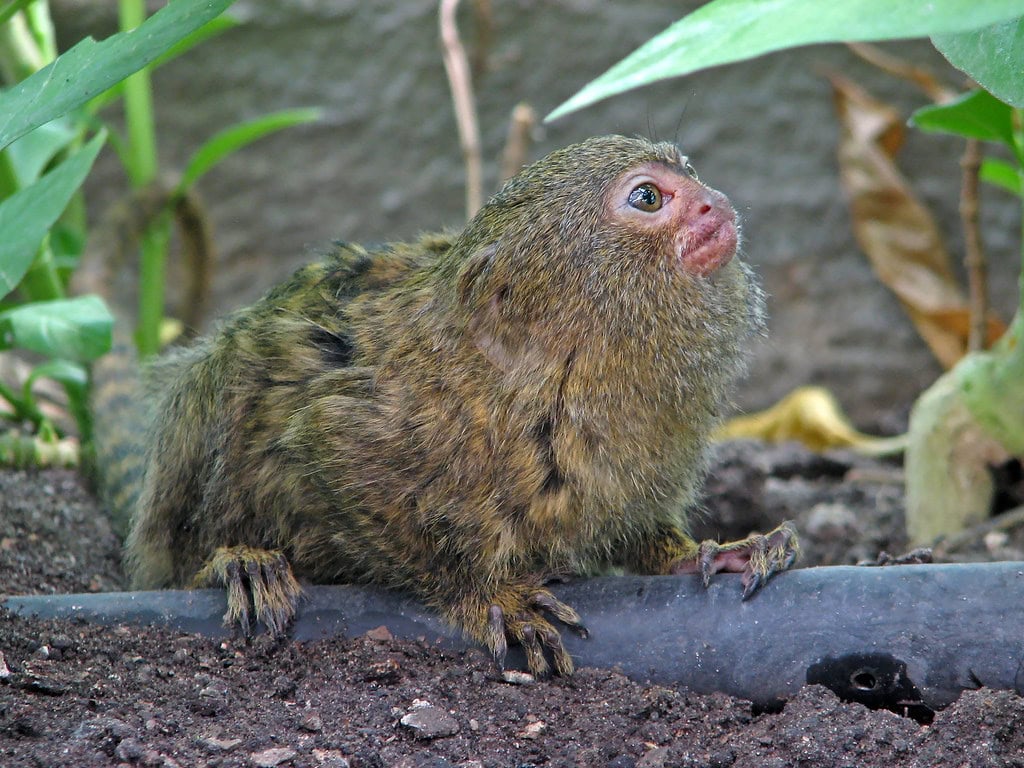
The pygmy marmoset stands as a testament to the remarkable diversity of evolutionary adaptations found in the primate order. As the world’s smallest monkey, it represents an extreme example of specialized adaptation, having evolved its diminutive size to exploit an ecological niche inaccessible to larger primates. Despite weighing less than a typical smartphone, these tiny primates maintain complex social structures, specialized feeding strategies, and sophisticated communication systems that rival those of much larger mammals. Their existence challenges our understanding of the relationship between physical size and behavioral complexity.
Beyond their scientific significance, pygmy marmosets capture our imagination as living examples of nature’s boundless creativity. Their survival in the increasingly threatened Amazon rainforest depends on conservation efforts to protect their specialized habitat. As we continue to learn more about these remarkable miniature monkeys, they remind us that sometimes the most extraordinary adaptations come in the smallest packages, and that preserving biodiversity means protecting even the tiniest of Earth’s remarkable creatures. The pygmy marmoset may be small in stature, but its significance in understanding primate evolution and the wonders of natural adaptation stands impressively tall.
- How Wildfires Influence Animal Migration and Habitats - August 9, 2025
- The Story Behind the Bison’s Comeback from Near Extinction - August 9, 2025
- How Penguins Take Turns at Sea and Nest to Raise Chicks - August 9, 2025

